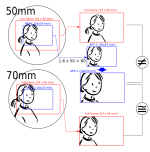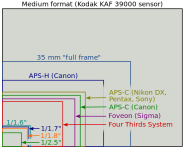Hello,
I just have a small question for normal or FX compatible nikon lenses to have the focal length for DX body is to multiply what is written on the lens by 1.5 for example the 70-300 will equivalent to 105-450. Does this apply to DX lenses too? Or what it's mentioned is the real focal length
Thank you
Sent from my iPad using Tapatalk
I just have a small question for normal or FX compatible nikon lenses to have the focal length for DX body is to multiply what is written on the lens by 1.5 for example the 70-300 will equivalent to 105-450. Does this apply to DX lenses too? Or what it's mentioned is the real focal length
Thank you
Sent from my iPad using Tapatalk



